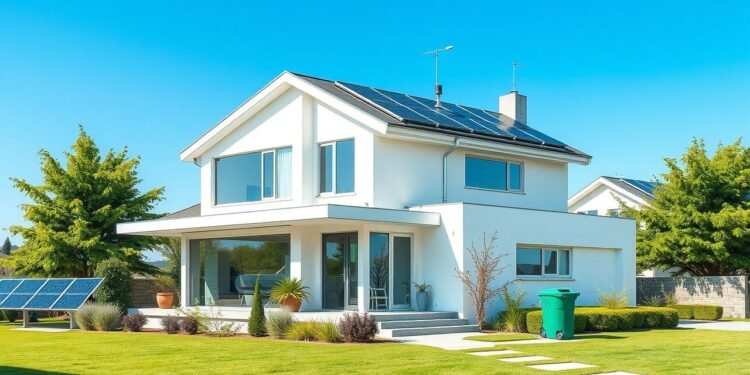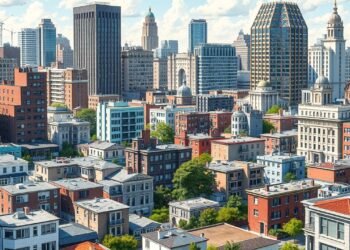Are you concerned about how climate change is affecting real estate? With increasing carbon emissions and growing energy usage, the built environment accounts for over 40% of global emissions. 1 This makes sustainable development a critical matter for property owners and investors like you.
The positive news? Real estate is progressing with green building standards, energy-efficient technologies, and renewable energy sources. These advancements help reduce your carbon footprint while also saving money over time. 2 In this blog, you’ll explore solutions to adopt sustainability while enhancing property values and appealing to eco-conscious buyers. 3
Continue reading to see how real estate can create a greener future!
Key Takeaways
- Real estate generates over 40% of global carbon emissions. Sustainable development with LEED standards, renewable energy, and green technologies lessens this impact while reducing costs.
- Over 43% of investors have committed to net-zero carbon goals. Green buildings appeal to eco-conscious buyers and provide tax benefits like grants for solar panels or wind turbines.
- Using eco-friendly materials like bamboo or recycled steel decreases construction waste and supports sustainability without compromising durability.
- Smart building technologies, such as IoT-powered systems, optimize energy use by efficiently managing HVAC or lighting in real time.
- Green practices increase property values by addressing growing demand from climate-focused stakeholders while encouraging economic growth globally.
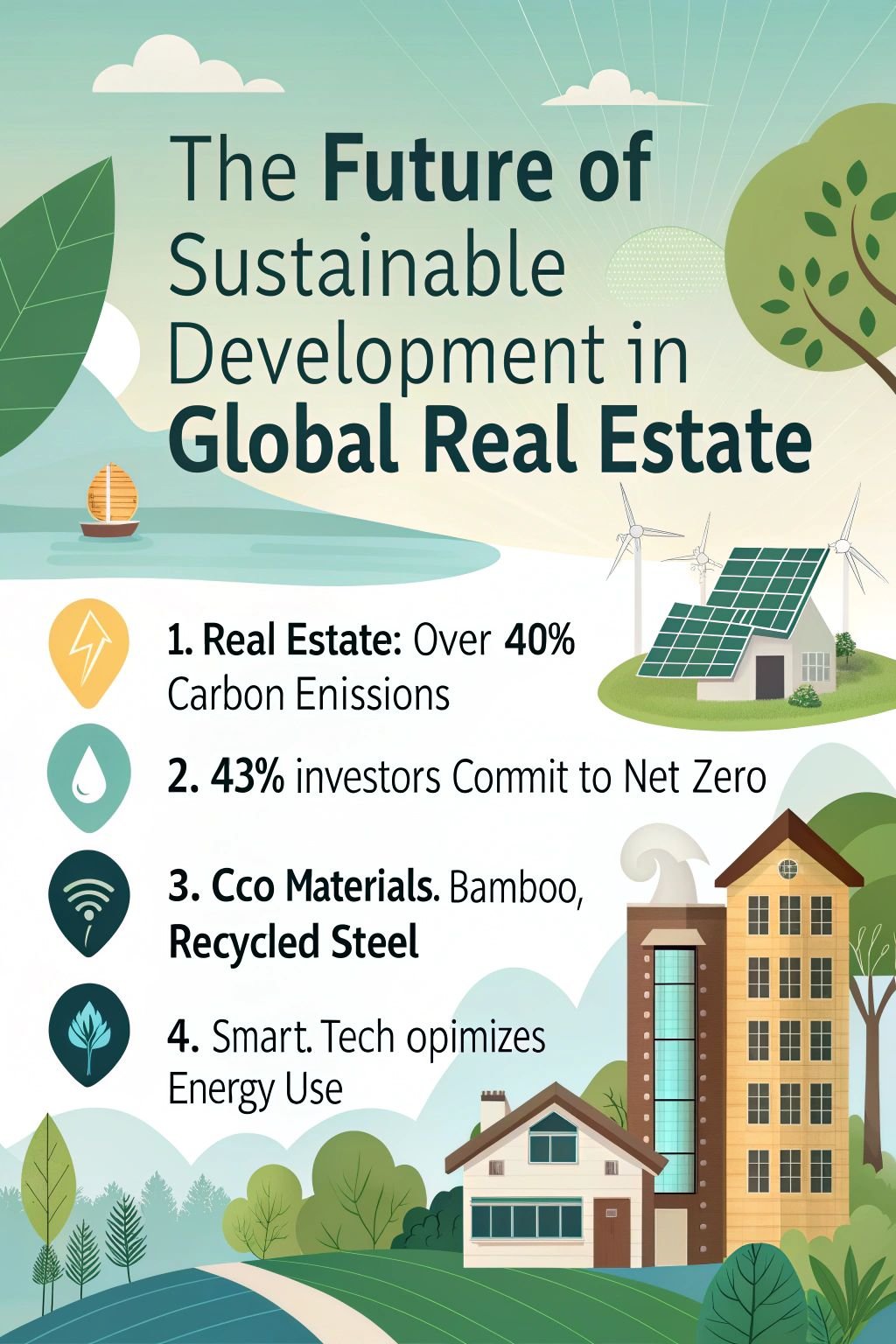
The Future of Sustainable Development in Global Real Estate
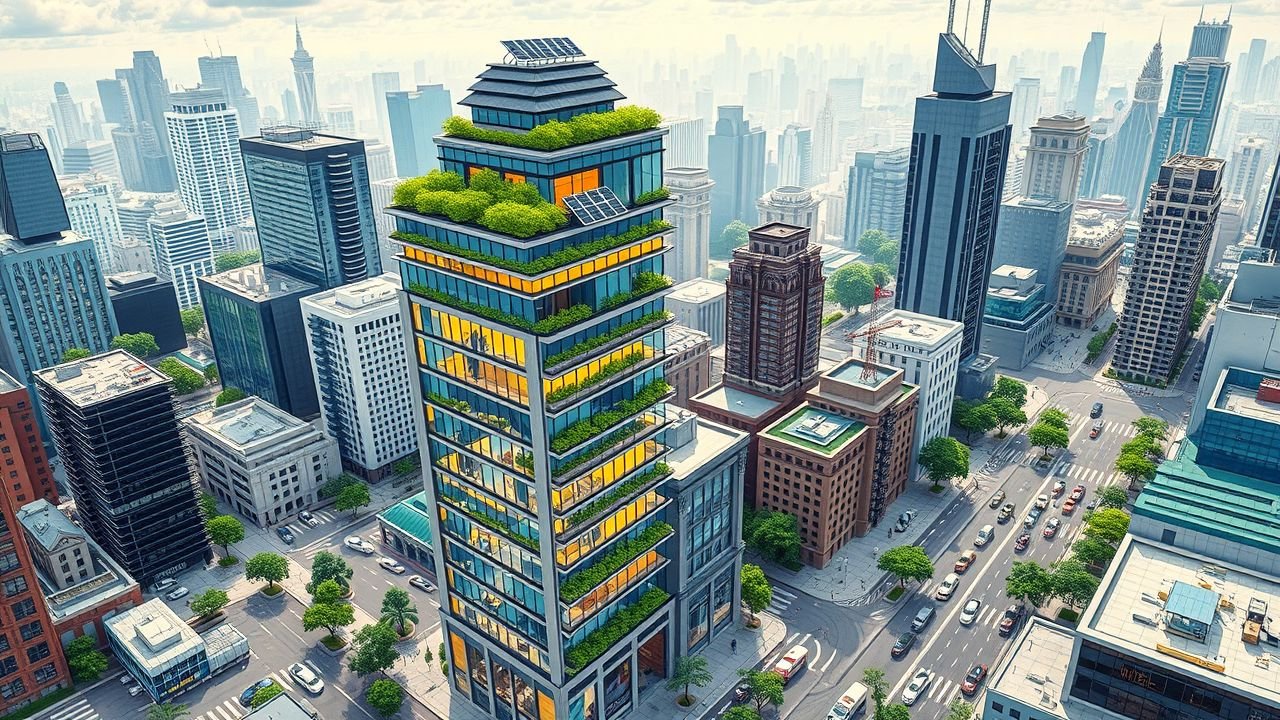
Sustainable development is transforming how buildings affect the environment. Eco-friendly spaces, energy-saving technologies, and sustainable approaches are establishing new benchmarks for real estate globally.
Transitioning to greener facilities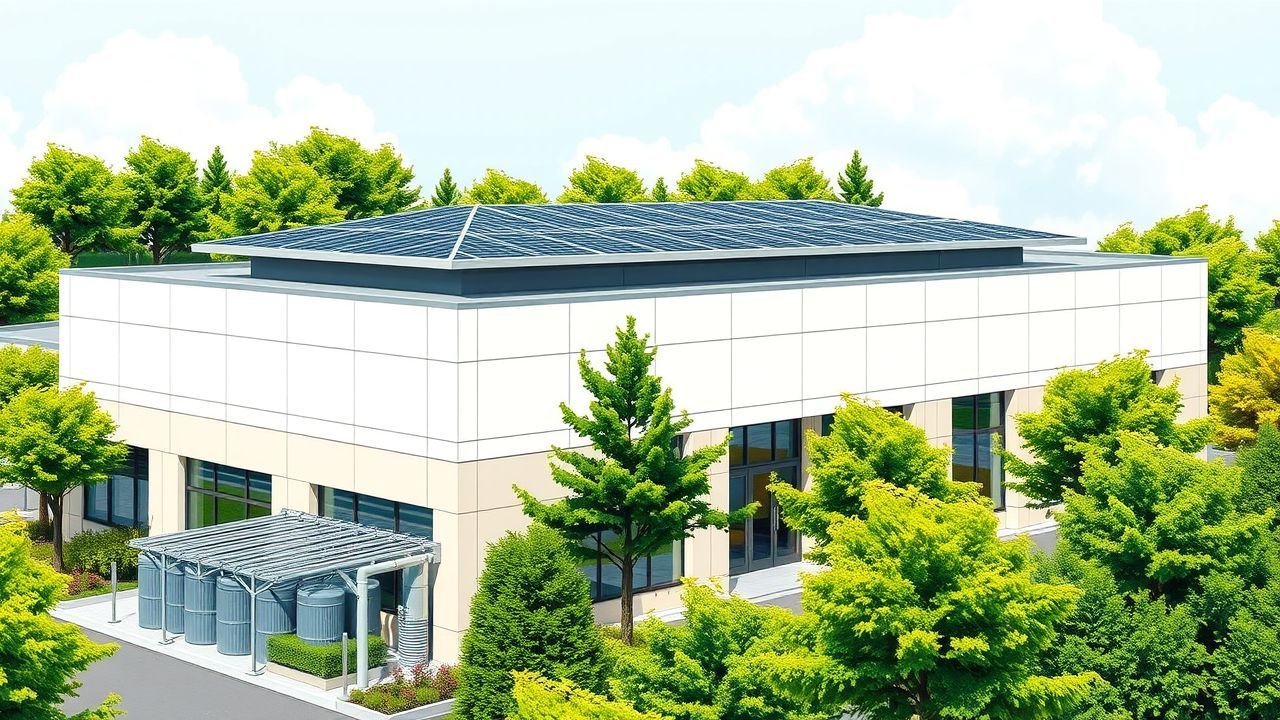
Switching to greener facilities significantly reduces energy consumption and carbon emissions. Commercial real estate currently contributes over 40% of global carbon output, making sustainable practices a top priority. 1 Green building standards like LEED (Leadership in Energy and Environmental Design) help property owners lower operating costs while boosting asset value. For example, integrating energy-efficient HVAC systems or LED lighting cuts utility expenses without compromising performance.
Using renewable energy sources such as solar panels or wind turbines can transform properties into more eco-friendly spaces. Governments and financial institutions now offer incentives for green developments, including tax breaks and grants that make these improvements cost-effective.
Over 43% of investors have established net-zero carbon goals, showing growing interest in environmentally friendly buildings. As demand rises for sustainability-focused real estate, adopting these measures also attracts more eco-conscious buyers and tenants.
Green features reduce your property’s carbon footprint and increase its long-term market appeal.
Developers are increasingly combining rainwater harvesting systems with indoor air quality upgrades to improve environmental responsibility within the built environment. These modern installations promote resource efficiency while addressing issues like water scarcity in urban areas.
Properties with green roofs or urban greenery create healthier communities by reducing heat islands and improving social sustainability across neighborhoods.
Implementing sustainable building practices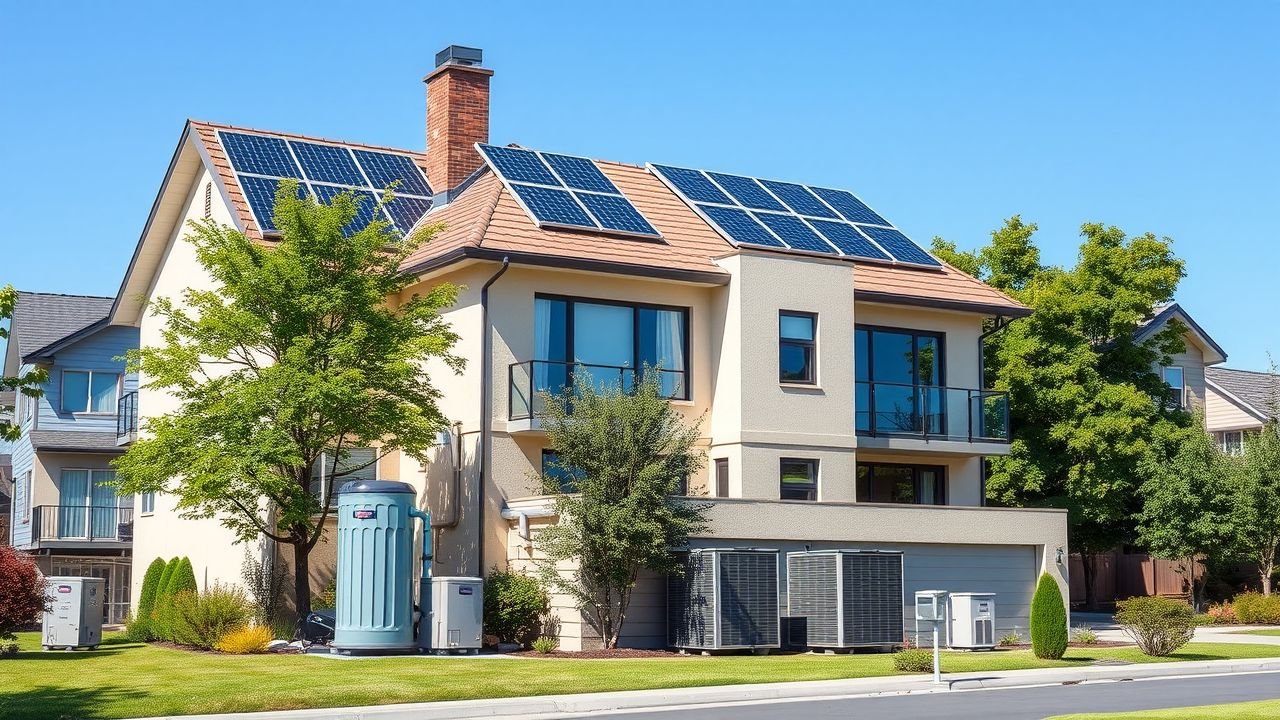
Sustainable building practices reduce carbon emissions and energy costs. Construction with eco-friendly materials like recycled steel or bamboo minimizes the carbon footprint of projects.
LEED certifications confirm buildings meet green building standards for energy efficiency and waste reduction. Using renewable energy sources, such as solar panels or wind turbines, supports climate action while lowering utility expenses. 2
Efforts to reduce energy consumption improve property values and indoor air quality. Energy-efficient HVAC systems save money while using less power. Water conservation measures through rainwater harvesting systems make properties more adaptable to environmental changes.
Green spaces improve livability for residents, promoting social equity in sustainable communities. 3
Innovations Driving Sustainable Real Estate
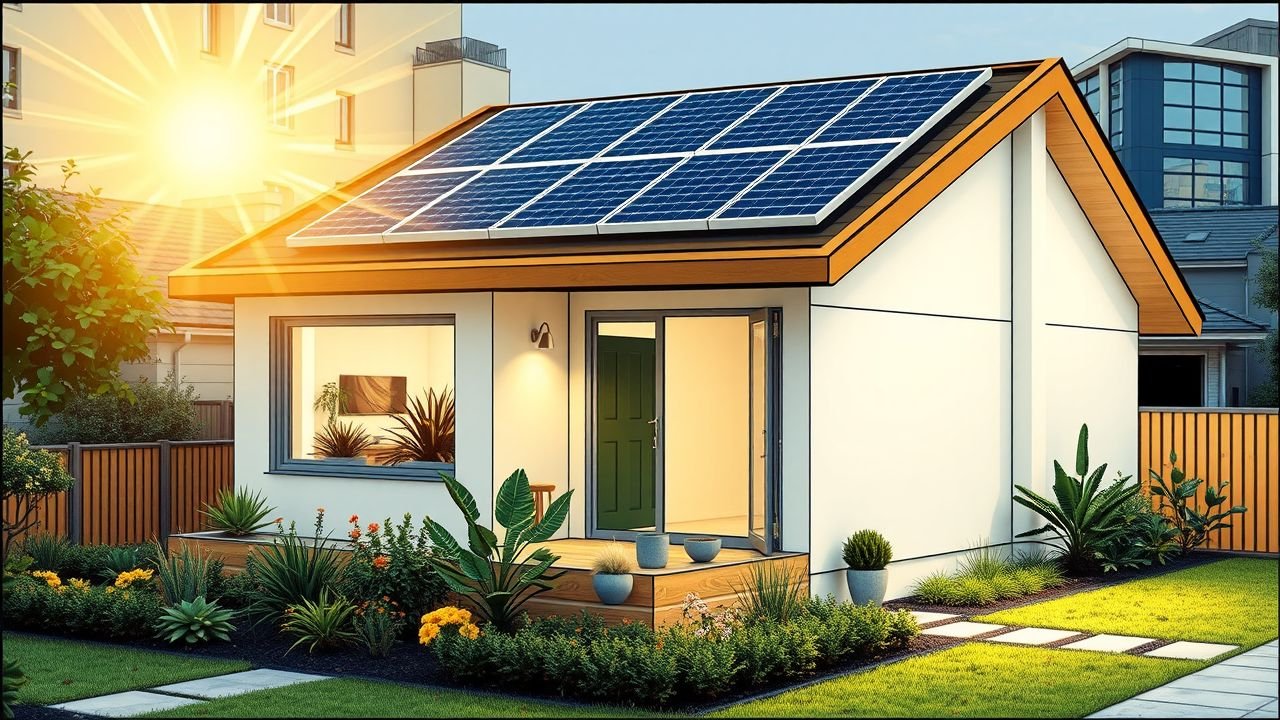
Eco-friendly advancements are transforming real estate. Clean energy sources and modern technologies are reducing energy consumption while enhancing buildings for the future.
Energy-efficient building materials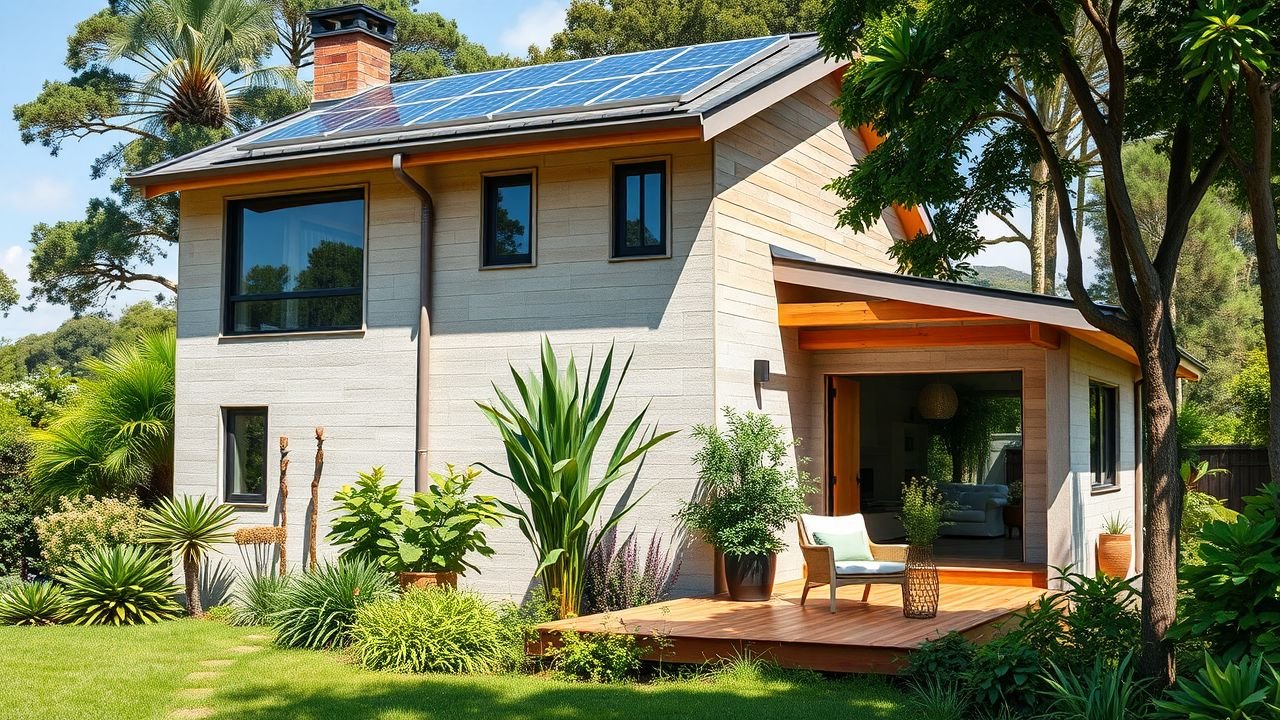
Energy-efficient building materials help reduce energy consumption and improve sustainability in real estate. Materials like insulated concrete forms (ICFs) and structural insulated panels (SIPs) improve the energy efficiency of walls, roofs, and foundations.
Using these materials reduces carbon emissions while ensuring indoor air quality for a healthier living space. 4
Using renewable options such as bamboo or recycled steel minimizes your home’s carbon footprint without compromising durability. Pairing these with clean energy systems like solar panels supports sustainable buildings that meet green building standards like LEED certification. 5Smart building technologies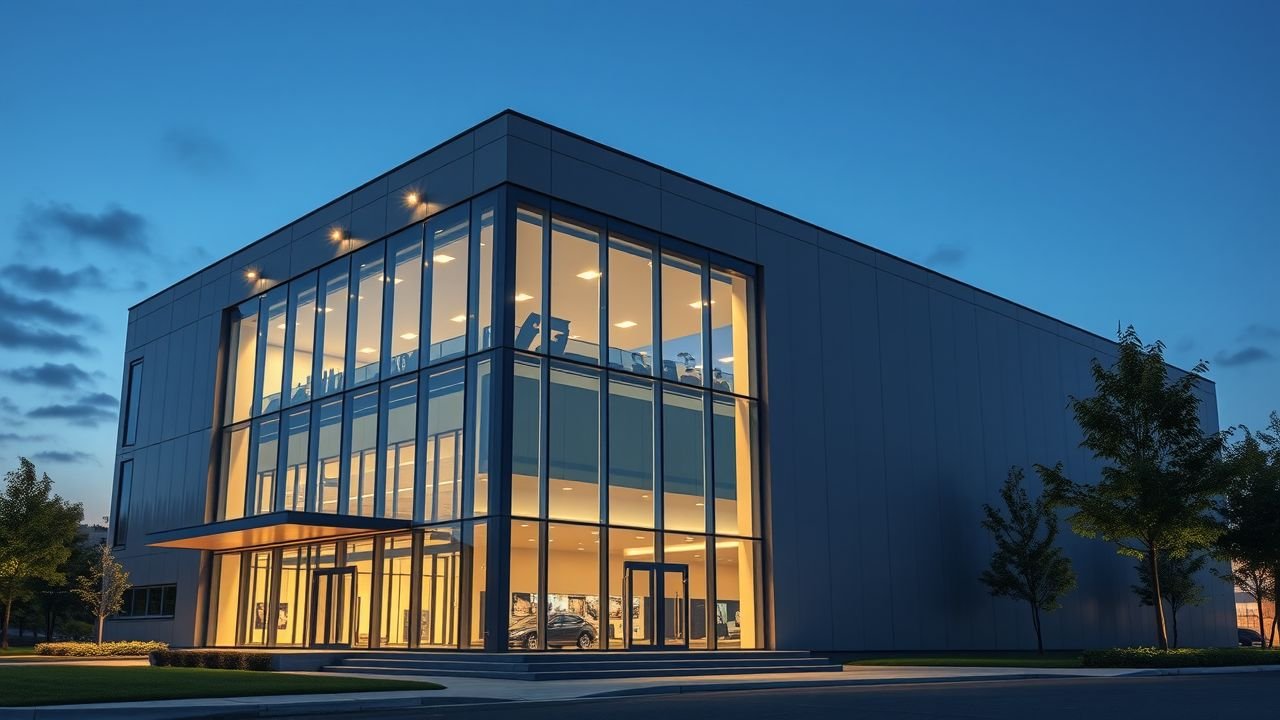
Smart building technologies are transforming real estate by optimizing energy efficiency and reducing carbon emissions. These systems use the Internet of Things (IoT) to monitor and manage energy usage in real time.
For instance, smart thermostats can automatically adjust heating or cooling based on your preferences and occupancy patterns. This approach reduces running costs while also contributing to a building’s overall carbon footprint reduction.
Installing LED lighting with motion sensors is another way these technologies support sustainability. They decrease electricity consumption while extending bulb lifespan, making them an economical choice for property owners like you.
Advanced systems can even integrate solar panels or wind turbines into operations, further increasing renewable energy use. 6
As regulations encourage greener practices, these innovations help meet green building standards such as LEED certification. The rising demand from eco-conscious investors highlights how smart technology in buildings can enhance property values over time.
Sustainable design combined with IoT solutions fosters smarter investments in global real estate markets ahead of new adoption trends driving progress today! 7
Trends in International Real Estate Markets
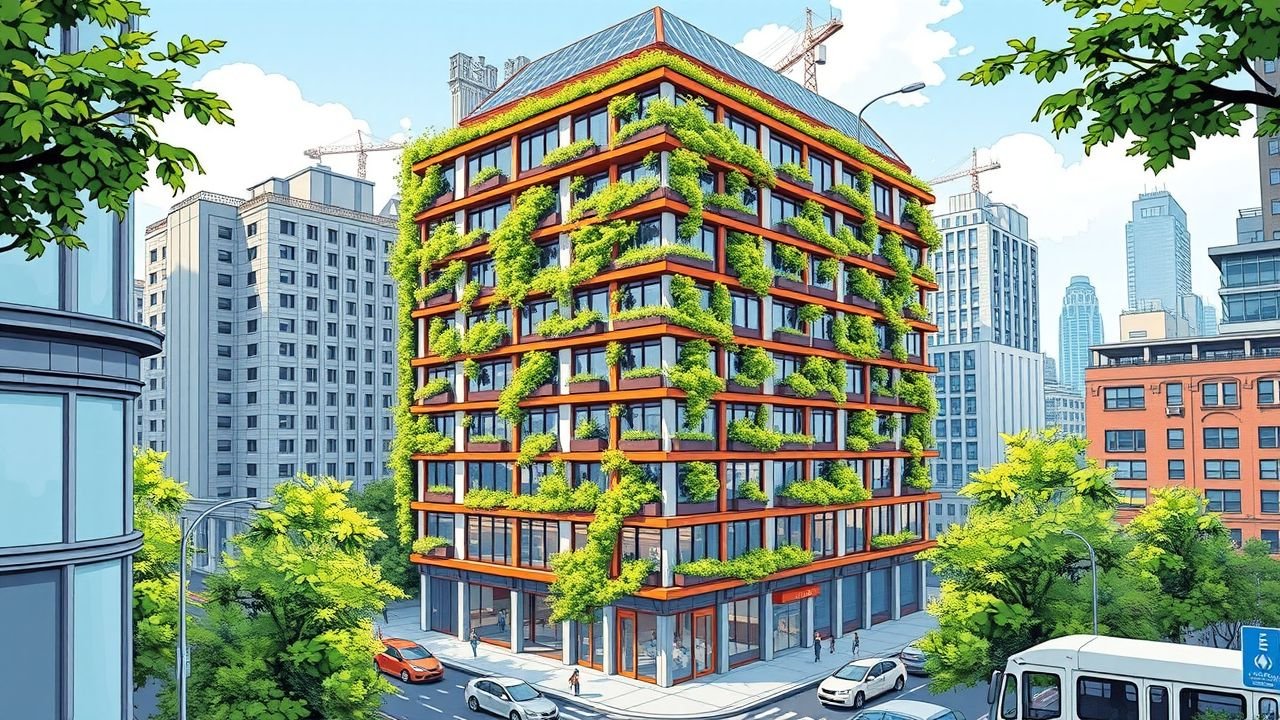
Global demand for sustainable developments is reshaping real estate markets. Investors now focus on energy-efficient buildings to reduce their carbon footprint. Over 43% of investors have committed to net-zero carbon goals, leading to increased adoption of green building standards like LEED. 8 This shift also addresses regulatory pressures and growing environmental awareness. Property values for sustainable housing continue increasing as eco-conscious buyers prioritize clean indoor air quality, renewable energy sources, and waste management systems.
Emerging economies are driving growth in affordable housing projects with sustainable practices. Regions like Southeast Asia and South America incorporate smart cities powered by solar panels, wind turbines, and water conservation technology into development plans.
Europe remains a leader in using circular economy models to lower construction waste while maintaining economic growth within the built environment. These trends create new opportunities for real estate professionals while supporting global climate adaptation efforts.
Impact on Business and Economy
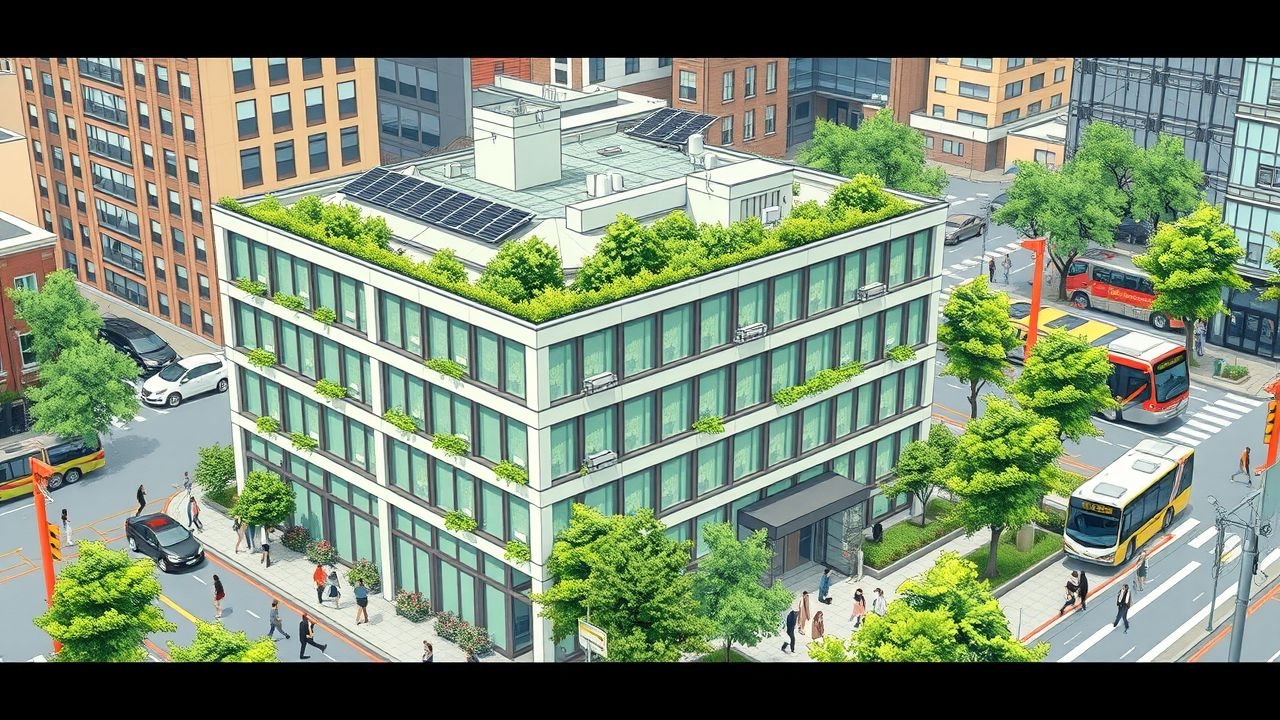
Sustainable practices in real estate can reduce operational costs and increase long-term profits. Green buildings also attract investors who value energy efficiency and environmental responsibility.
Cost benefits of sustainable development
Upgrading to energy-efficient HVAC systems or integrating solar panels reduces energy bills significantly. 10 Green buildings cut costs over time by lowering operating expenses. Governments also provide tax incentives for projects meeting green building standards like LEED certification, offering additional financial benefits. 9
Selecting eco-friendly materials and water conservation methods, such as rainwater harvesting systems, decreases costs in property management. Long-term maintenance expenses decline due to sustainable practices like waste reduction and energy-saving measures.
These savings increase property values and appeal to real estate investors focused on economic growth. 9Attraction of eco-conscious investors
Sustainable development reduces expenses while drawing eco-conscious investors. With 43 percent of investors targeting net-zero carbon goals, greener properties are more appealing than ever.
LEED certifications and green building standards increase asset values, making properties more desirable to buyers like you and others with environmental awareness.
Tenants now seek spaces aligned with corporate responsibility efforts, encouraging the real estate industry to adopt sustainable practices. Tax incentives for renewable energy sources such as solar panels or wind turbines make deals even more appealing.
These changes improve property values and meet growing demands from climate-conscious stakeholders while promoting economic growth in a sustainable future. 9
Conclusion
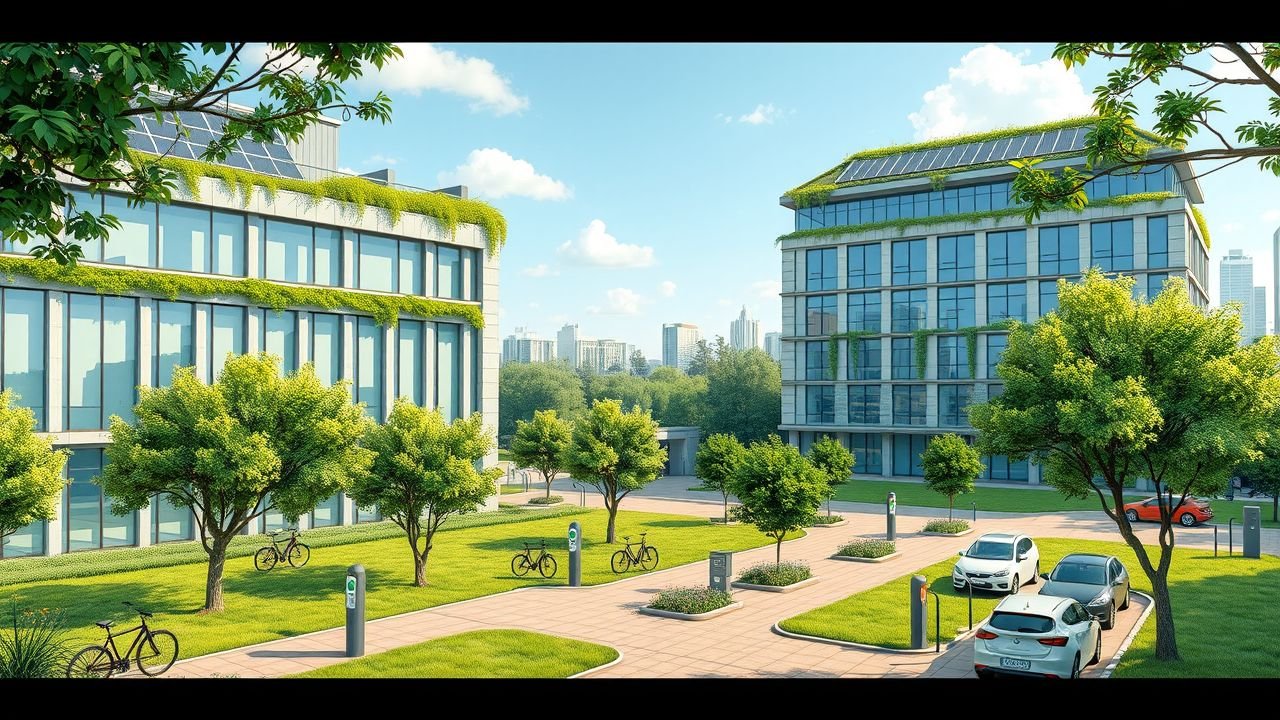
The future of real estate relies on sustainable development. Green building standards, energy-efficient designs, and eco-friendly materials are transforming the industry. These practices reduce costs, minimize carbon footprints, and increase property values.
You can promote environmental responsibility while driving economic growth. By investing in these advancements, you help shape smarter cities and a healthier planet for everyone.
For a deeper dive into the evolving landscape of sustainability in global markets, explore our detailed insights on trends in international real estate markets.
FAQs
1. What does sustainable development mean in global real estate?
Sustainable development in global real estate focuses on reducing carbon emissions, promoting energy efficiency, and using renewable energy sources like solar panels and wind turbines. It also emphasizes eco-friendly materials, green spaces, and social equity to create sustainable cities.
2. How can the real estate industry reduce its carbon footprint?
The industry can adopt green building standards such as LEED certification, install energy-efficient HVAC systems and LED lighting, use geothermal systems for heating or cooling, and implement water conservation methods like rainwater harvesting systems.
3. Why is energy efficiency important for buildings?
Energy efficiency reduces operating costs while lowering environmental impact. Energy-efficient measures like proper insulation, LED lighting, and advanced HVAC systems conserve resources and contribute to mitigating climate change.
4. How do sustainable practices affect property values?
Real estate with features like renewable energy installations or high indoor air quality often sees higher valuation due to lower utility costs and increased demand from environmentally conscious buyers.
5. What role does technology play in sustainable development for real estate?
Technology such as the Internet of Things (IoT) helps monitor energy consumption in the built environment. IoT devices improve property management by optimizing resource use through data-driven insights.
6. Can affordable housing align with sustainability goals?
Yes! Affordable housing projects can integrate eco-friendly materials, waste reduction strategies, and sustainable living principles while addressing social equity within communities striving toward the United Nations’ Sustainable Development Goals (SDGs).
References
- ^ https://www.areadevelopment.com/sustainable-development/q4-2021/future-of-sustainability-in-real-estate.shtml
- ^ https://www.cim.io/blog/the-rise-of-green-real-estate (2023-12-13)
- ^ https://cjrbuilds.com/sustainable-development-building-a-greener-future-in-real-estate/ (2023-11-28)
- ^ https://www.researchgate.net/publication/363439736_Innovation_in_Green_Building_Sector_for_Sustainable_Future
- ^ https://theflexinsights.com/green-buildings-the-future-of-real-estate/ (2024-07-15)
- ^ https://spark.jllt.com/resources/blog/global-smart-building-trends-shaping-the-future-of-real-estate/
- ^ https://www.rosebuilding.com/blog/smart-building-technologies-the-future-of-commercial-real-estate (2024-08-24)
- ^ https://www.weforum.org/stories/2024/12/reimagine-real-estate-better-future/
- ^ https://lowerypa.com/2024/05/20/the-rising-value-of-sustainability-in-commercial-real-estate/ (2024-05-20)
- ^ https://www2.deloitte.com/content/dam/Deloitte/ca/Documents/financial-services/ca-the-future-of-sustainable-real-estate-is-smart-en-aoda.pdf


